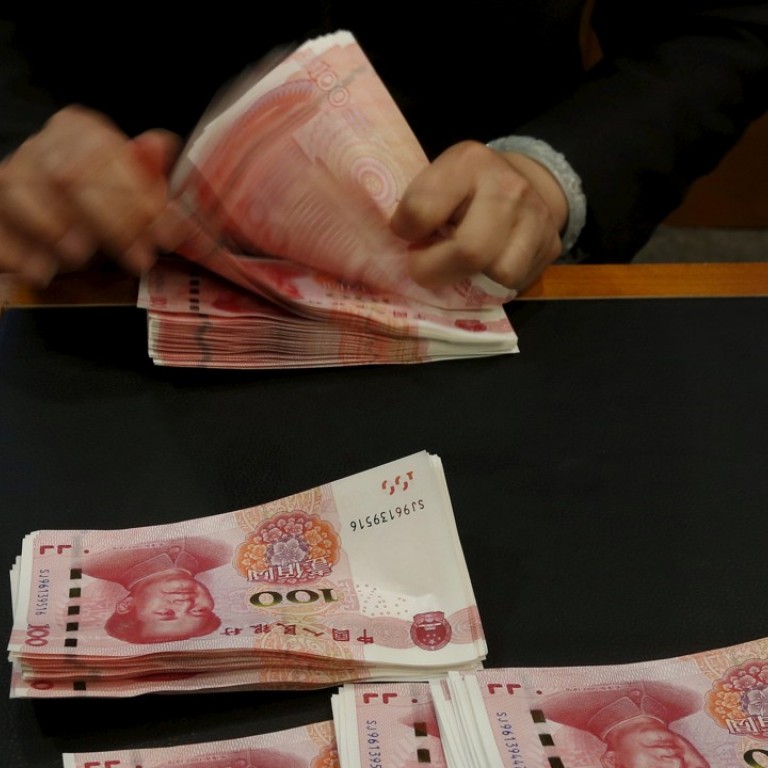
Yuan erases gains as central bank’s move to stifle short-selling is not enough to halt the slide
China’s yuan dropped on Monday, erasing all of Friday’s increase when the central bank decided to make it more expensive to short the currency.
On Friday, the People’s Bank of China (PBOC) raised the reserve requirement ratio to 20 per cent from zero for financial institutions when conducting onshore yuan forwards business on behalf of customers. The move sparked a sharp rebound in the currency later that day.
The yuan continued to recover on Monday morning, climbing by as much as 0.38 per cent, the biggest rise in almost two weeks on an intraday basis, before reversing to a decline to trade at 6.8454 per dollar.
The PBOC is buying time now to defend the 7-per-dollar level, where it will have a huge impact on capital flight
On Monday, the central bank lowered the daily yuan reference rate to 6.8513 against the dollar, in line with predictions made by bank models in recent months.
Analysts said that while the PBOC’s surprise move was aimed at squeezing out bearish short trades and slowing down the yuan’s slide toward the critical 7 per dollar level, it was a softer measure than a direct intervention in the foreign-exchange market or an interest rate hike – a measure used by Argentina when it attempted to curb the sliding peso this year.
PBOC’s action may inject some near-term stability in the currency, but it would not change the long term bias for yuan weakness, said Heng Koon How, head of markets strategy at United Overseas Bank.
In August 2015, the PBOC used the same reserve requirement ratio tactic after its one-off devaluation that had triggered expectations of a pronounced fall in the yuan. But the measure only helped to keep the currency stable at around 6.35 per dollar for almost a month and was unable to stop it from weakening to 6.95 the following year.
“The PBOC is buying time now to defend the 7-per-dollar level, where it will have a huge impact on capital flight,” said Jimmy Zhu, chief strategist, Fullerton Markets.
Chris Turner, an analyst at ING Bank, said he doubted investors would return to yuan exposure any time soon despite the increase in the reserve requirement ratio. The combination of the US-China trade spat, firmer US rates and dollar strength in the coming months will probably force the PBOC to use more of its currency toolkit to prevent the yuan slipping through 7.00 per dollar.
“US Commerce Secretary Wilbur Ross has made the US trade position clear by outlining that Washington wants to create a situation where it’s more painful for China to continue with current practices than it is for China to reform.”
To cushion its economy, the Chinese authorities have released more liquidity into the financial system. This has had the effect of narrowing the spread between Chinese and US interest rates to the point where they are on the verge of reversing – a situation that would increase fund outflows, according to analysts.
China’s 10-year government yield has dropped 43 basis points this year to 3.5 per cent, approaching the 10-year US treasury yield of 3 per cent, which is up about 54 basis points this year.
“If the negative spreads persist, domestic Chinese companies and investors will be motivated to increase their USD positions,” ANZ said.

